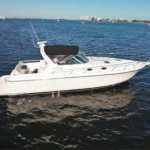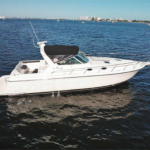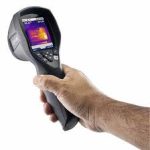 Marine Surveyor 34956 – How to Ensure a Comprehensive Inspection of Interior and Cabin Areas?
Marine Surveyor 34956 – How to Ensure a Comprehensive Inspection of Interior and Cabin Areas?
When it comes to purchasing a boat, ensuring that the interior and cabin areas are in top condition is crucial. This is where a Marine Surveyor 34956 comes into play. Suncoast Marine Surveying is a reputable company in the marine industry that specializes in providing professional inspection services for all types of vessels.
A comprehensive inspection of the interior and cabin areas of a boat is essential to uncover any potential issues that may affect its safety and seaworthiness. As a boat owner or prospective buyer, it is important to enlist the services of a qualified Marine Surveyor 34956 to conduct a thorough assessment of these areas.
Here are some key tips on how to ensure a comprehensive inspection of interior and cabin areas:
1. Hire a Professional Marine Surveyor 34956 – When it comes to inspecting the interior and cabin areas of a boat, it is best to leave it to the experts. A qualified Marine Surveyor 34956 from Suncoast Marine Surveying will have the knowledge, experience, and tools necessary to conduct a thorough inspection and provide you with an accurate assessment of the boat’s condition.
2. Check for Structural Integrity – One of the first things that a Marine Surveyor 34956 will look for when inspecting the interior and cabin areas is the structural integrity of the boat. They will check for any signs of damage, including cracks, leaks, or corrosion, that could compromise the safety of the vessel.
3. Inspect Electrical Systems – Another important aspect of the inspection is checking the boat’s electrical systems. A Marine Surveyor 34956 will inspect the wiring, connections, and components to ensure that everything is in proper working order and meets safety standards.
4. Assess Plumbing Systems – In addition to electrical systems, the plumbing systems in the interior and cabin areas of a boat must also be inspected. A Marine Surveyor 34956 will check for any leaks, clogs, or malfunctions that could lead to water damage or other issues.
5. Look for Signs of Moisture and Mold – Moisture and mold can be significant problems in boats, especially in enclosed spaces like cabins. A Marine Surveyor 34956 will carefully inspect the walls, floors, and ceilings for any signs of moisture intrusion or mold growth.
6. Evaluate Ventilation and Air Quality – Proper ventilation is crucial in maintaining good air quality inside a boat’s interior and cabin areas. A Marine Surveyor 34956 will assess the ventilation systems to ensure that they are functioning correctly and providing adequate airflow.
7. Test Safety Equipment – Lastly, a comprehensive inspection should include testing all safety equipment in the interior and cabin areas. This includes fire extinguishers, smoke detectors, carbon monoxide alarms, and emergency exits.
By following these tips and hiring a qualified Marine Surveyor 34956 from Suncoast Marine Surveying, you can ensure a comprehensive inspection of the interior and cabin areas of your boat. Don’t take any chances when it comes to the safety and seaworthiness of your vessel – trust the experts to provide you with an accurate assessment and peace of mind.r



 If you are in need of a marine surveyor in the 34956 area, look no further than Suncoast Marine Surveying. Our team of experienced professionals is dedicated to providing comprehensive inspections of all types of vessels, ensuring that our clients have the information they need to make informed decisions.
If you are in need of a marine surveyor in the 34956 area, look no further than Suncoast Marine Surveying. Our team of experienced professionals is dedicated to providing comprehensive inspections of all types of vessels, ensuring that our clients have the information they need to make informed decisions. When purchasing a boat, one of the most important steps is hiring a qualified
When purchasing a boat, one of the most important steps is hiring a qualified  If you’re in need of a
If you’re in need of a 